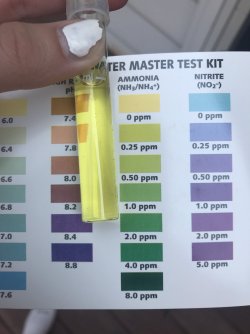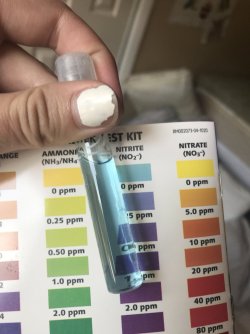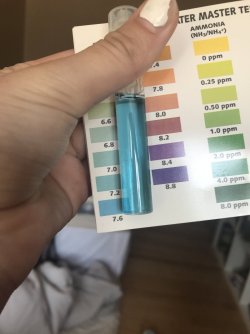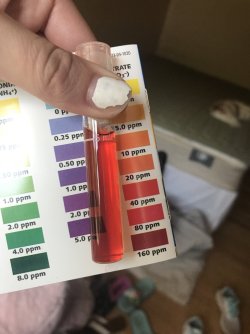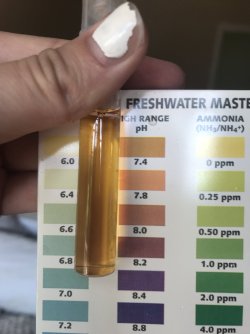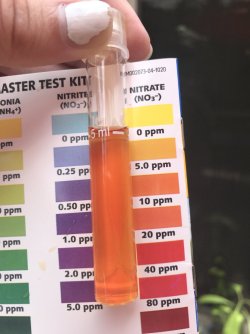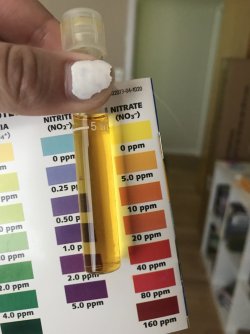I've been following this thread, and I may have some suggestions.
On the ammonia, I would not worry about this. But I would definitely get some serious floating plants. Red root floaters I have never had, I think this is more recent fad, lol, but it looks comparable to Salvinia. Better than nothing, but you really need some serious plants like Water Sprite, Water Lettuce, Amazon Frogbit, or a stem plant like Pennywort. I know, I always mention the same plants but they do such a great job here.
I suspect the substrate is part of the issue. Everyone here knows how opposed I am to these money-grabbers, I just do not think they have that much benefit. But unless you want to change it out--you said this is a 10g tank?--we can work with it. Aside from ammonia, these can be nitrate factories depending what is in them. If you tap water is zero nitrate as you say, your aim is to get the nitrates as close to this as possible. But the nitrates must also remain low between water changes. Depending upon the fish load, they may go up a tad, but if say you get them down to 1-5 ppm, they should remain 1-5 ppm, or just into 5-10 ppm.
Several members have commented on various aspects, and I saw nothing I disagree with. provided the parameters--being GH, pH and temperature here--are reasonably the same between tank water and tap water, you just cannot do too many water changes, and big pones. There is sometimes a thinking that slowly reducing nitrate is better--no it is not. Nitrate is toxic, as are ammonia and nitrite, it just takes longer to harm the fish, but they are being weakened the longer it continues, so as low as possible and as soon as possible.
Feed minimally, don't be afraid of a fast day here and there.
A word on testing...always read the colour under diffused natural daylight. Never direct sunlight, and certainly never artificial light of any kind. White light is composed of colour wavelengths, and every light source can be very different and distort these colours. I use the window which is in shade but still bright.
Coming to light, do you have any data on the LED or the added one? I'm wondering about spectrum. Also wondering about intensity, depending what the second light is. The so-called "plant" lights are actually not that good, and prone to cause algae while not providing the best light for plants because they are red and blue without green in the mix. The Kelvin or CRI number for each would help here.

